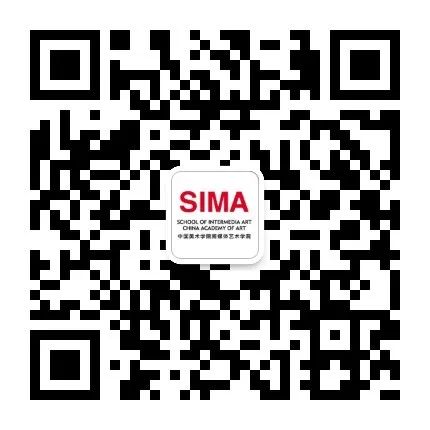
28 Mar 展览|山水精神:高世强的宇宙观流动影像艺术
作为山水文化之核心“山水精神”体现了一种整体性、两级关联互补和互为转化的世界观和宇宙观。这种在中国传统思想体系里孕育的认知论推崇“天人合一”的理念。在当下的全球生活中,西方现代化生产方式,现代性以来的哲学思考已无法有力回应当下日愈加剧的生态危机和政治冲突。此时,西方主导的人本主义已进入后人本主义、新物质主义转向,并试图从西方现代性以外的多种传统文化资源里吸取营养。而本身受西方现代性影响深刻的文化,去除殖民性的认知,以建立去西方化的知识生产显得更加重要。融合了儒、释、道三种思想和哲学认知的“山水精神”,文人气节以及 “天人合一”理念体现了非二元对立、相关互补的宇宙观;它们为当下全球知识构建里提供一种新的可能。对于当代中国重要的影像艺术家高世强来说,包括山水画、山水文学、山水行走等多种物质与非物质遗产的山水文化,不仅是历史完成态,而且是一种持续发展、发生的文化实践。在高世强的“山水”影像书写里,“山水精神”被有力激活,参与到构建我们对未来世界想象的艺术生产之中。
作为中国新媒体艺术、影像艺术领域的重要力量,高世强在中国美术学院培养了众多年轻的中国视觉艺术家。但他本人在最近的十年里,却有意识地与受新自由主义影响的当代艺术界保持距离。这种态度反映了他一直以来的思考:艺术应该如何存在,艺术家、知识分子应如何参与社会、参与公共生活。自2017年以来,高世强与他的创作集体开始了“山水影像计划”,旨在通过在“山水”中的行走以及影像创作来吸收并延续“山水精神”。高世强的影像实践虽关注文人气节,但已摆脱“人”的视角,从以人为中心的世界“撤退”;在探讨“隐逸”文化的同时试图进入“山水精神”里深受道家思想影响的宇宙层面。将人类社会置于更大的宇宙极性转化关系网络中,他的作品潜在地将观众引入安哲乐(Roger T. Ames)所称的“充满相互关联、相互依赖、开放、不确定、互补、相关、共同延伸”的“多焦点世界”。他们 “无为”式、“不干涉”的艺术创作,可看成是詹姆斯·米勒 (James Miller)所说的可产生“催化”效应的途径。高世强的“山水影像”系列包括九屏电影装置作品《山水宣言》(2017)和六屏电影装置作品《云山六章》(2018)。采用中国折屏的形式,延续“山水精神”,通过在山水中漫游积累的身心体验,通过创造“天人合一”的影像意界,他的创作用当代数字流动影像呈现了有和无、虚与实、静与动等互补转化的传统美学。
此次在伦敦玛丽女王大学的BLOC电影院和空间的“山水精神”展映为高世强的三部单屏作品的国际首映:《山水:富春江作为方法》(59分13秒,2022),致敬黄公望著名的《富春山居图》(1350);单镜头卷轴电影《山水:拂晓》(14分52秒,2022);《山水:唐诗辞典》(31分13秒,2022),以及高世强带领的创作集体的6部学生作品。10月18日至20日期间,将有一场与高世强的深度对话,探讨“山水影像之书”创作和“山水精神”的内核;高世强关于影像实践教学的讲座;一场有关宇宙观思考、中国艺术史、艺术家流动影像、自然和慢电影的专场圆桌讨论,参与的学者有范可乐(伦敦国王学院),陆小宁(亚非学院),Lucy Reynolds(西敏寺大学),Anat Pick(伦敦玛丽女王大学)。
“山水精神”并非仅是中国传统文化资源对西方学术界相关问题的修正或补足,而且是在当代世界知识构建里,为抗衡西方主导知识论,输入重要血脉。
余天琦
伦敦玛丽女王大学
电影系 高级讲师 (副教授)
2023年10月于伦敦

山水精神:高世强的宇宙观流动影像艺术
活动流程
16:15—17:15|高世强关于影像实践教学的讲座(中文英文现场翻译)



The spirit of “mountains and water” derived from traditional Chinese “mountains and water” culture indicates a holistic, correlative and transformative worldview. This epistemology, nurtured within the framework of traditional Chinese thought, venerates the concept “human-nature-oneness”, tienrenheyi. In the current global context, Western modernist production and philosophical thinking since modernity have proven insufficient in effectively addressing the escalating ecological crises and political conflicts of our times. At this juncture, Western-dominated humanism has seen a posthumanist turn, striving to draw nourishment from a variety of traditional cultural resources beyond modernity. For cultures deeply influenced by Western modernity, decolonising and removing colonial knowledge frameworks becomes even more crucial so to establish de-Westernized knowledge production. Encompassing various material and non-material heritage elements, the “mountains and water” as a living culture includes Chinese landscape paintings, literature, physical traveling and more, and has absorbed various schools of thoughts, including Daoism, Confucianism and Zen Buddhism. For contemporary Chinese leading artist, filmmaker Gao Shiqiang, the spirit of “mountains and water” can be revitalised and intervene how we construct our future imagination of the world.
As a key force of China’s new media art scene, Gao has mentored a number of well-received young Chinese visual artists, but himself has been consciously keeping a distance from neo-liberal contemporary art world in the recent decade. His disengagement with the commercialization of art reflects his ongoing questioning on how artists should engage in public debates. Since 2017, Gao started the ‘mountains and water moving image project’ with his film collective and aims to embody the spirit “mountains and water” through their physical being within ‘mountains and water’ and through moving image making. Gao’s practice, though concerns the literati’s integrity, has detached from human subjective perspective; while discussing the “reclusion”, it has ‘retreated’ from a human-centred world to reach the cosmological level that concerns a correlative and transformative worldview that is deeply rooted in Daoism. By placing human sphere within the much larger web of cosmological polar relationship, his works potentially bring the audience into what Roger Ames calls “a world of ‘foci’ characterised by interconnectedness, interdependence, openness, mutuality, indeterminatedness, complementarity, correlativity, co-extensiveness”. Far from activism, their tranquil non-interference acts as what James Miller calls ‘transactions’ that ‘catalyse’ transformation in both human and nonhuman spheres. Gao’s film installations in this series include a nine-screen work Mountains and Water: a declaration (2017), and 6 screen work Clouds and Mountains in Six Chapters (2018) which takes the format of Chinese folding screen. Aesthetically, his films also embrace ‘human-nature-oneness’, by creating a strong sense of ideorealm, yijing, that plays on the aesthetic of mutual opposites, i.e. being and nonbeing, fullness and blankness, as a result of accumulations of experience of wandering in mountains and water.
In this programme of Spirit of Mountains and Water at BLOC, Queen Mary University of London, we will present the international premieres of Gao’s three single-screen works: Mountains and Water: Fuchun River as a method (59’13”, 2022), paying homage to the famous painting Dwelling in Fuchun Mountains (Huang Gongwang, 1350); the single shot scroll film Mountains and Water: Dawn (14’52, 2022) and Mountains and Water: Dictionary of Tang Poetry (31’13”, 2022), along with a selection of works from his film collective. Alongside the screenings, there will be a conversation with Gao Shiqiang reflecting on his practice, Gao’s talk on his philosophy of teaching creative practice, and a panel discussion on cosmological thinking, Chinese art histories, nature and moving image with Victor Fan (KCL), Xiaoning Lu (SOAS), Lucy Reynolds (Westminster), Anat Pick (QMIL).
Kiki Tianqi Yu
London Oct 2023

跨媒体艺术学院是中国美术学院最新锐的学科集群,也是中国第一所真正意义上的实验艺术学院,聚集了一批具有国际影响力的艺术家与学者,拥有一支高水平的国际化教学团队,2010年被美国《亚太艺术》杂志评为“亚洲最值得期待的当代艺术教育机构”。
跨媒体艺术学院的学术宗旨在于:促进媒体技术开发,推动当代艺术实验,从媒体中发掘创意,从技术中发显人文;以媒体实验、艺术创作、社会思想、策展实践四维互动的格局,在国际平合上推动当代艺术的跨学科研究和跨领域实践。学院专业一方面提供最前沿的新媒体艺术创作与媒体设计的训练,另一方面,强调社会思想与艺术策划的智识培养;注重媒体手段与思想方法的综合训练,致力于培养掌握新媒体技术、具有实验精神和创新能力的当代艺术与媒体创意人才。


